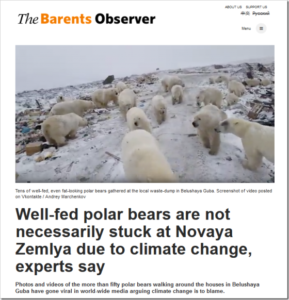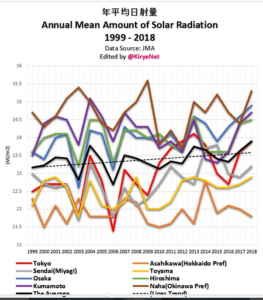by Rod Liddle, February 17, 2019 in GWPF/SundaTimes
Such a hectic life these kids lead. On Friday, my lovely 13-year-old daughter was out on the streets of Canterbury with her schoolmates demanding something be done, right now, about climate change, because adults are letting us down and it’s our future and it isn’t fair that horrid right-wing old white men are deliberately destroying the planet.
The next day she was at Gatwick with her mum, off for a half-term ski trip to Norway. I hope she got the irony: all those emissions, just so she could have a chance to snap her femur in half. Still, at least she wasn’t going to the Alps, where the wilderness has been murdered by skiers, the mountains stripped of forest and festooned with lifts and blue runs created by snow machines. Is there a more environmentally ruinous pastime than skiing?
…
by Charles the moderator, February 16, 2019 in WUWT
Thomas Crowther identifies long-disappeared forests available for restoration across the world. He will describe how there is room for an additional 1.2 trillion new trees around the world that could absorb more carbon than human emissions each year. Crowther also describes data from thousands of soil samples collected by local scientists that reveal the world’s Arctic and sub-Arctic regions store most of the world’s carbon. But the warming of these ecosystems is causing the release of this soil carbon, a process that could accelerate climate change by 17%. This research is revealing that the restoration of vegetation and soil carbon is by far our best weapon in the fight against climate change.
The living parts of the planet make it unique from all other parts of the solar system, and they drive every aspect of biogeochemical cycling. It is essential that we represent these living processes into our understanding of current and future biogeochemical cycles in order to understand and predict climate change.
…
by P. Homewood, February 15, 2019
This story could very well be headlined: «When internet came to Novaya Zemlya».
Locals started to post photos and video of the more than 50 polar bears in their neighborhood. Over the last week, social media as well as online newspapers globally have gone mad over the news coming out from one of the remotest towns on the planet, the closed military settlement of Belushaya Guba.
The little-known town on the Russian Arctic archipelago have since last autumn been struggling with polar bears walking the streets and around the corners of apartment- and office buildings. Even walking by a baby-stroller inside an entrance, one of the video-recordings show.
Regional authorities have declared a state of emergency after the bears no longer react to noice- and light signals from guards trying to scare them off.
Belushaya Guba, like the entire Novaya Zemlya, is closed off military area. The newly upgraded air base Rogachevo is just a few kilometers outside of town.

…
by P. Gosselin, February 17, 2019 in NoTricksZone
Today any warming found anywhere almost always gets blamed on heat supposedly getting trapped by rising atmospheric CO2 concentrations. Moreover, activist scientists insist we ignore all other powerful factors such as solar and oceanic cycles.
In fact these activists have become so extreme that they insist that record cold today is caused by warming.
But as people learned already in the first grade, the earth’s surface warms when the sun shines on it, and tends to cool when clouds obstruct the sun.
Solar radiation at the surface has risen over the past decades
In Japan, the Japanese Meteorology Agency (JMA) has 8 stations that measure solar radiation reaching the surface, and many other for recording temperature.
Data from the 8 stations recording solar radiation are plotted since 1999 (i.e. 20 years) as follows:

Data source: JMA
La géologie, une science plus que passionnante … et diverse


